
While all plants share similarities in how they grow, the cannabis plant has its own independent quirks and foibles that set it apart. There are a number of steps you can take during the vegetative stage of weed growth that will help you later down the road, such as what you feed your plant and when you do it.
Marijuana vegetative stage
During the initial growth period of the plant, it builds up structural integrity (stem and roots). It’s only after that the plant begins to develop foliage.
During these early stages of growth, your plant will require a lot of nitrogen supplied to it.
Early leaves will begin the photosynthesis process, absorbing sunlight and furthering the plant’s growth.
After your plants have germinated and begun to stabilize, consider taking out any late-germinating seeds or stunted seedlings.
That way these won’t compete with your other plants for light and nutrients.
Once your cannabis plant has a stable root system and the environment is set up properly, it should just be a matter of upkeep to make sure you end up with a good yield.
The plant will continue to grow and develop given proper nutrients and light, developing a strong structure necessary for the flowering phase.
As the plant continues to develop and mature, it will require additional fertilizer, water, light, and higher levels of carbon dioxide in the environment.
It will also require more nitrogen. You want to make sure you’re providing for all of the cannabis plant’s needs.
In this article, we’ll talk about cannabis seedlings, the vegetative phase, and how to manage foliage development.
| Cannabis plant growth stages | Average duration |
| Germination stage | 2-10 days |
| Seedling stage | 1-3 weeks |
| Vegetative stage | 1-15 weeks |
| Flowering stage | 7-14 weeks* |
It’s all about maximizing growth in this vulnerable early phase and making sure you keep your plant healthy and strong right up to the home stretch.
Seedling stage
The leafy foliage of the cannabis plant grows in a series. Every series produces a certain number of leaves. Generally, the first series produces a single leaf. The second series will put out three leaves, the third series will produce five leaves, and so on.
The number of leaves produced in a single series usually caps out around ten. You may sometimes see leaves referred to as ‘lamina’ in growing literature.
After about two to three weeks of growth, your cannabis plant should have experienced about 5 or 6 different rounds of growth.
You should be producing a regular and steady amount of leaves with every new series. You’ll also notice that the branches are beginning to develop and expand outward.
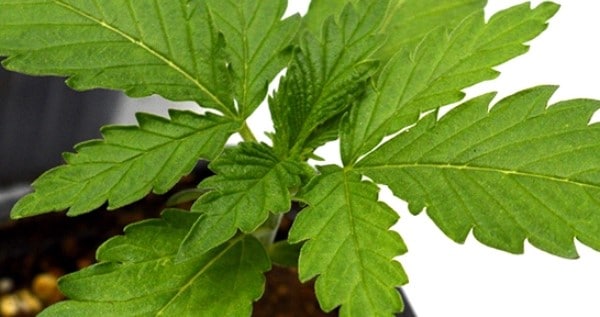
Feeding seedlings
You’ll want to make sure your young cannabis seedlings get lots of nitrogen early on in their development. Your best bet of getting the right dosages for your baby plants is to grab a fertilizer that is tailored to this delicate stage.
My free Grow Bible has more details on the veg stage of your growing plants. Be sure to download it today!
Grow Bible

- Grow with my Quick Start Guide
- Discover secrets to Big Yields
- Avoid common grow mistakes
Error: Contact form not found.
Vegetative stage
A good growth period will be followed by a strong flowering phase. As a grower, it’s your job to get your plants everything they need to develop properly before they flower.
This means healthy foliage, a tough structure to cope with the weight of heavy buds, and a strong root system. Keep an eye on the light, nutrients, carbon dioxide and temperature of your grow room throughout the process.
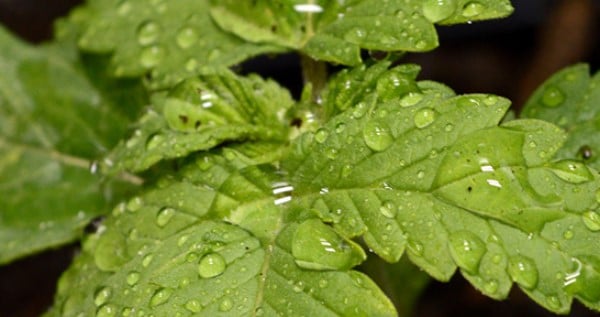
Best nutrients for the veg stage
Using fertilizers comprised of worm meal, blood meal, or bat guano will help you get the nutrients you need from natural sources.
Other grow mediums include various algae compounds, nettle blends, or fish compounds as your organic fertilizers.
There are several factors that make organic fertilizers a better choice for growers than chemical fertilizers.
One of the major reasons it’s better is that it can be very easy to overfeed your cannabis plants and damage them when using powerful chemical fertilizers.
When the first leaves pop out, you’ll want to measure the electrical conductance of your nutrient solution. You want to measure very close to 1 at the beginning.
As the plant grows and matures, it’s ok for the electrical conductance to be raised up higher. When a cannabis plant has at least 4 or 5 different levels of foliage, you can raise the electrical conductance up again, to about 1.5.
Once branches begin to develop on the plant, you can raise the electrical conductance up to about 2, but be careful about too much nutrient solution and water. Overwatering your plant can cause it to grow more in the stem then the buds, which is counterproductive for most growers.
Allow your plants root systems to air out and rest between irrigations. Remember to start adding plenty of nitrogen to your plant as soon as the first leaves develop, but make sure you are keeping the electrical conductance at around 1 to start with.
Also read When and how to water cannabis plants
Grab our complete fertilizer set to give your young marijuana seedlings the best nutrients to support their development.

Buy marijuana fertilizer
- Nutrients from seedling to harvest
- Enough nutrients for at least 5 plants
- Discounted combination deal
Environmental factors
The rest of the environment is also something you want to make sure you are optimizing throughout every stage of growth, but particularly during the early phases. You have a couple of options when it comes to lighting.
“Vegetative growth is maintained by giving plants 16-24 hours of light every day. Unrestricted rapid vegetative growth is the key to a heavy harvest.”
Jorge Cervantes
After your plants get past the seedling stage, you can expose your cannabis plants to light for a full 24 hours, but it’s better to simulate night and give the plants up to six hours of darkness every 24 hours.
You’ll want sodium vapor or metal halide type lamps to make sure you’re providing the right kind of light.
Keep the air temperature in your grow room somewhere between 68 and 78 degrees Fahrenheit. The roots should be slightly cooler, around 65 degrees Fahrenheit.
Despite this, make sure the soil is warm enough, especially early on. If roots don’t develop properly, the rest of the plant will not either.
Don’t forget to measure the humidity in the room as well. This will affect the efficiency of your plant’s respiration, and also the early health of the plant.
You want the humidity in your grow room somewhere between 50% and 70%. When the plant matures, it will be less sensitive to humidity.
Controlling these environmental factors will help optimize your plant. However, genetics still play a huge role in determining how the plant develops, and what sort of yield you’ll get.
Even if everything is perfect, you can’t turn bad genetics into a great product.
Still, if you are meticulous and careful throughout the cannabis cultivation process, you can always optimize the plant, however high its potential yield might turn out to be.
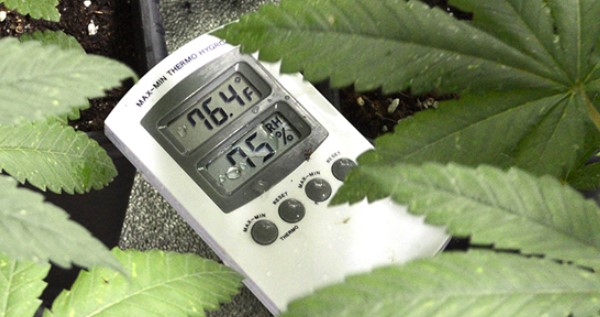
Week by week pictures
Especially during the vegetative stage of growth, be careful when irrigating and watering your plant. As the plant grows larger and larger, it will require more water to keep up with its development.
This means it’s easy for the plant to become dehydrated at this point.
Watch out for curling or yellowing in the leaves, and monitor the electrical conductance of your nutrient solution if you’re implementing a hydroponics system in your grow room.
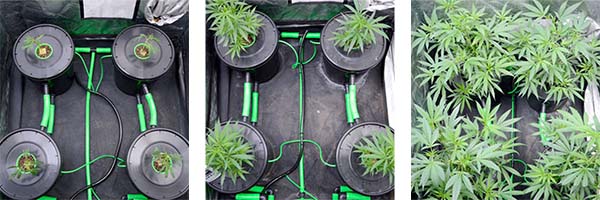
Temperature, humidity, and nutrients
Once your plants hit the peak of their growth phase, you can expose your plants to light for a full 24 hours, but it’s better to simulate night and give the plants up to six hours of darkness every 24 hours You’ll want sodium vapor or metal halide type lamps to make sure you’re providing the right kind of light.
Keep the air temperature in your grow room somewhere between 68 and 78 degrees Fahrenheit. The roots should be kept at a slightly lower temperature, around 65 degrees Fahrenheit.
Despite this, make sure the soil is warm enough, especially early on. Remember, your roots need to develop properly for the rest of the plant too.
Don’t forget to measure the humidity in the room as well. This will affect the efficiency of your plant’s respiration, and also the early health of the plant.
You want the humidity in your grow room somewhere between 50% and 70%. When the plant matures, it will be less sensitive to humidity.
Keep adding nitrogen, too! You want the electrical conductance to measure somewhere between 1.5 and 2. If you are using soil, make sure to continue adding liquid fertilizers and monitoring the moisture in the soil.
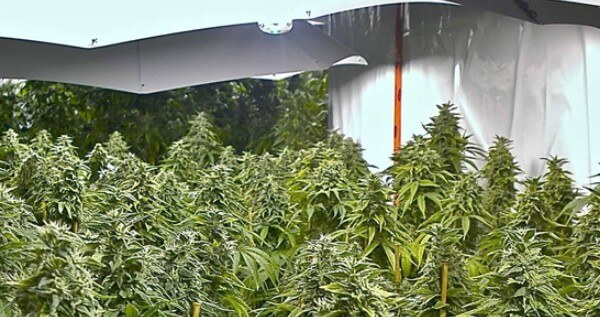
Determining the sex of a cannabis plant
There are two commonly utilized methods of determining gender in Cannabis plants. Gender is definitely something you want to be certain of because mixing male and female plants in your grow room has the potential to ruin your crop.
The first method for determining gender is to carefully examine the 5th series of leaves on your plant. You’ll want to do this right before the plant should flower. Indicas and hybrids with Indica genetics will display their sex between the leaves of the plant right before they flower.
If you look very carefully, you should be able to see a tiny white fiber if the plant is female. If the plant is male, it will have a small ball instead of a fiber or tendril.
This method is easy, but it’s not the most reliable, and sometimes it’s very difficult to find the developed sex organs on the plant because they are so small.
The better method is to take cuttings.
Once your plant is in the vegetative stage, you can take cuttings from the plant and root them in another room. Expose the newly rooted cuttings to 12 hours cycles of light and darkness. The plants should flower within several days. If any of them are male, you’ll want to remove them from the grow room.

Forcing flowering
After you’ve gone through and made sure that you don’t have any male plants in your grow room, make sure you’re ready for the next stage of growth: flowering. Set all the plants up neatly and double-check to make sure they aren’t fighting over any sources of light.
Once the plant is fully grown, besides flowering, you will need to start thinking about harvest time.
Keeping your plants well-spaced is a good way to help ensure a healthy yield. Double-check the roots to make sure all the plants have enough space below the surface as well.
If you need to transplant your Cannabis because the root system has grown too large, now is the time to do it.
Root systems expand rapidly during the vegetative stage of growth. You need to make sure the plant isn’t suffocating. If it can’t pull up and absorb the nutrients it needs, it won’t do well during the flowering phase.
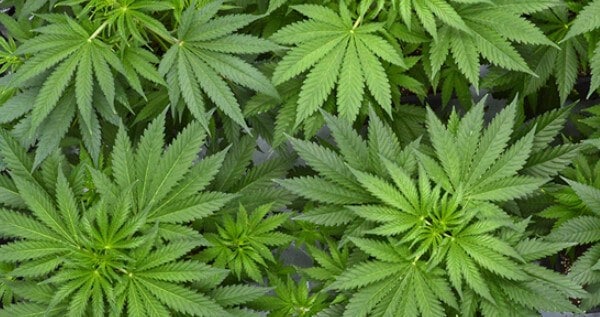
My free little Harvest Guide will help you determine the best moment to cut your plants. Download it here:
Harvest Guide

- Time your harvest for Perfect Taste
- Get THC levels for a Perfect High
- Don’t waste any Precious Bud
Error: Contact form not found.
Night and day
You can force your plant to flower by adjusting the light cycles in your grow room, mimicking a change of seasons.
You’ll want “shorter” days, with roughly 12 hours of light exposure followed by 12 hours of darkness. The easiest way to manage these changes in the light cycle is to use an automatic switch that turns your lights on and off at the required intervals.
Make sure that you stick to these cycles once you start. All it takes is a single exposure to light during one of the cycles of darkness to interrupt your flowering. If the flowering cycle is interrupted, the plant might start growing again.
This sort of stress is bad for the health of the plant, and it can result in reduced yield and unpredictable side-effects. If you do mistakenly expose the plant to light during a cycle of darkness, try to repeat the process again, and this time don’t interrupt it. Don’t be tempted to look in on your plant while it’s “night-time”!
Get the best results from seedling stage to that much-awaited harvest! Buy high-quality seeds from my seed bank now.
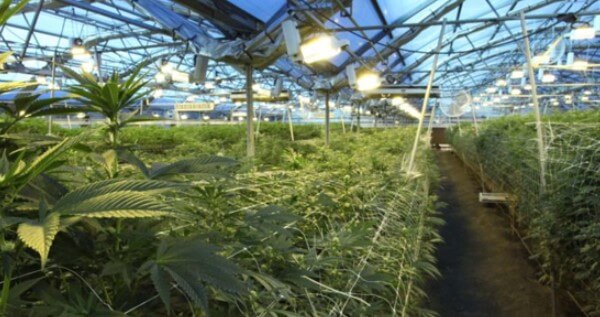
FAQ about weed vegetative stage
To maintain vegetative growth, provide your plants with 16-24 hours of light per day.
The vegetative stage can last for 3 to 6 weeks, depending on several factors.
The vegetative stage starts after about two to three weeks of growth.
Thanks for reading. Please leave comments or questions below and don’t forget to download my free grow bible!
Happy growing!
Robert
The post Vegetative stage appeared first on I Love Growing Marijuana.
